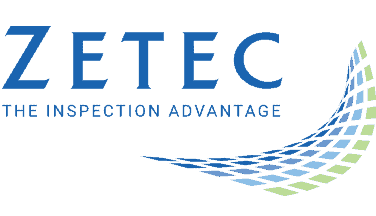What Are the Top Inspection Techniques in the Oil and Gas Industry?
Infrastructure and assets in the oil and gas industry demand a low failure rate in order for companies to stay profitable and protect the environment. Yet oil and gas assets are subject to heavy use and constantly exposed to the elements. Entropy begins to tear this infrastructure down before it’s even done being built. To combat entropy, maximize the working lifespan of their equipment, and maintain regulatory compliance, oil and gas companies must perform constant inspections.
The most effective means of inspecting infrastructure and assets in the field is nondestructive testing (NDT). NDT techniques allow inspectors to accurately assess equipment conditions without taking the equipment out of service. Here are some of the top inspection techniques the oil and gas industry uses to prevent asset damage and downtime.
Most Common NDT Inspection Techniques for Oil and Gas
Different NDT methods use various mechanisms to gain information about the physical condition of metals and other materials used in oil and gas equipment. NDT techniques allow workers to inspect welds, pipelines, holding tanks, risers, and other assets. As such, each technique has its own set of strengths and weaknesses. No one method can best accomplish every inspection; instead, companies must use a melange.
Here are some of the top NDT techniques:
Ultrasonic Testing
Ultrasonic testing is fast, accurate, portable, and versatile. It transmits acoustic waves into solid objects, then analyzes the waves that return. By doing so, it creates a map of the object’s interior. Ultrasonic testing can rapidly identify volumetric defects or damage, including voids and corrosion. Useful for metals thick and thin, ultrasonic testing is one of the most common and effective NDT techniques used in oil and gas. If you want to learn more about HTHA detection and assessment for the oil and gas industry, consider registering for a webinar that will cover what you need to know.
Eddy Current Testing
Eddy current testing shares many positive traits with ultrasonic testing: speed, portability, and accuracy. However, it does not have the same versatility since eddy current testing works on thin, conductive materials. This is because eddy current equipment relies on electromagnetic energy to map objects. Still, eddy current testing finds wide use identifying corrosion, cracks, or voids in thin materials, as well as to measure the thickness of coatings.
Liquid Penetrant Testing
Liquid penetrant testing is used primarily to detect leaks and cracks. A dyed liquid is introduced to the area being tested, revealing any areas it can seep into. Liquid penetrant testing can be effective, but it has several drawbacks: it requires significant setup and cleanup, it’s slower than other methods, and it cannot detect issues which don’t connect to the surface. The equipment detracts from portability as well, lending itself better to laboratory use over fieldwork.
Radiography
Radiography can provide detailed images of object interiors, laying bare any defects for technicians to see. While powerful and effective, radiation requires certain cautionary measures and slows the process of inspection. Much of what radiography can accomplish is replicated or improved on by ultrasonic testing, without the need for Geiger counters.
Visual Inspection
Visual inspection is the first and most common inspection technique used in the oil and gas industry. Corrosion, cracks, leaks, and defects can all be identified by close visual inspection. Visual inspections are relatively fast and inexpensive compared to other NDT methods as well. However, there’s a limit to what the eye can see, even with a borescope. Other NDT methods are needed to identify internal flaws—before they reach the surface.
An oil and gas company will use some or all of the above methods to ensure the integrity of their equipment. Techniques like visual inspection, ultrasonic, and eddy current complement each other, each excelling in separate areas.
Successful inspection programs require capable equipment and adequate training. Powerful equipment and advanced software reduce inspection times. Special tools can help improve specific inspections, such as for pipeline corrosion. Durability should be prized, so equipment continues to return value despite tough field conditions. Training should be overseen by a Level III NDT inspector, in accordance with industry standards. If your oil and gas companies follow these best practices, you can expect efficient processes and steady profits.
Zetec provides top ultrasonic and eddy current equipment for the oil and gas industry. Our experts can provide advice, technical support, and product-specific training for your technicians. To learn more, contact us today.
